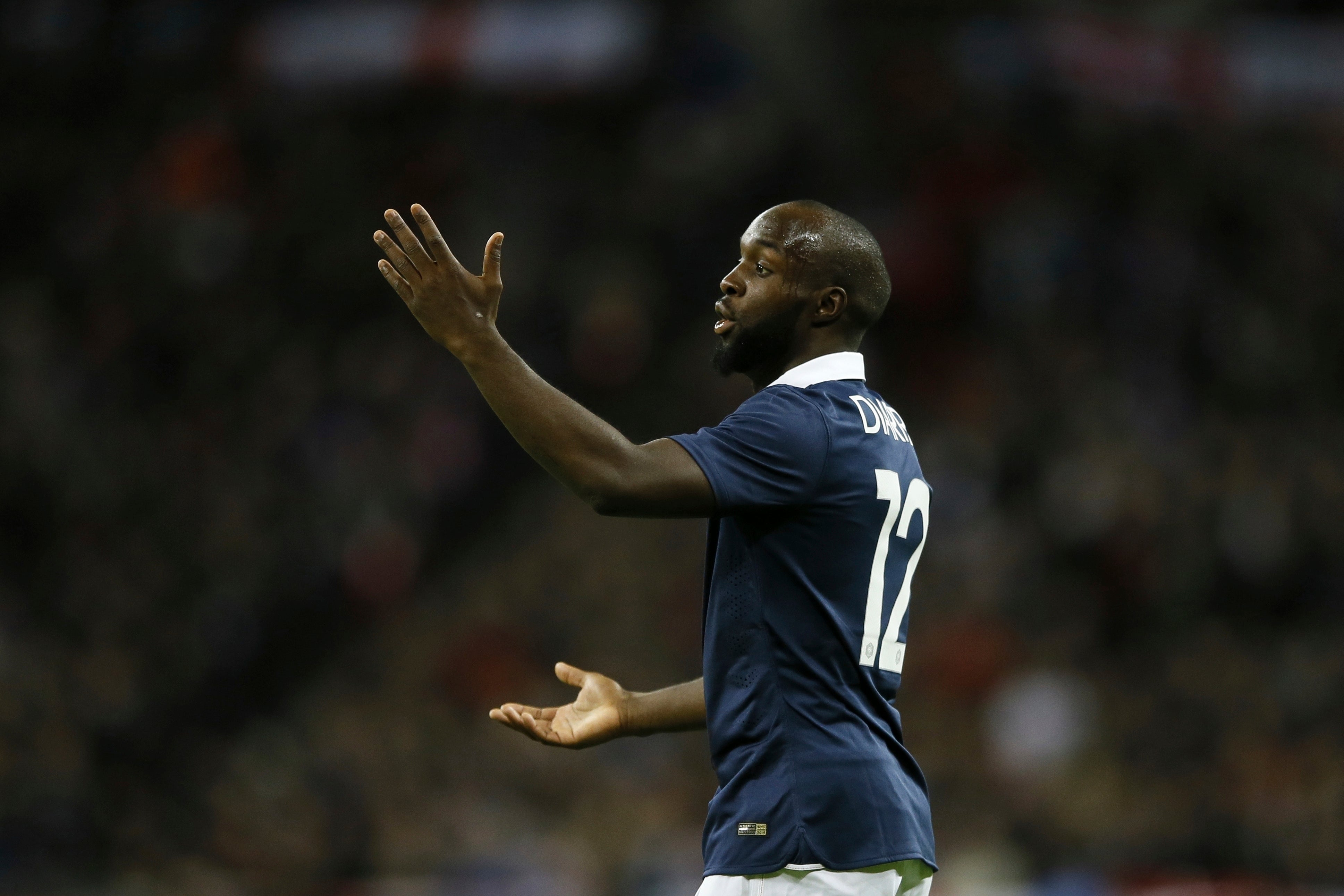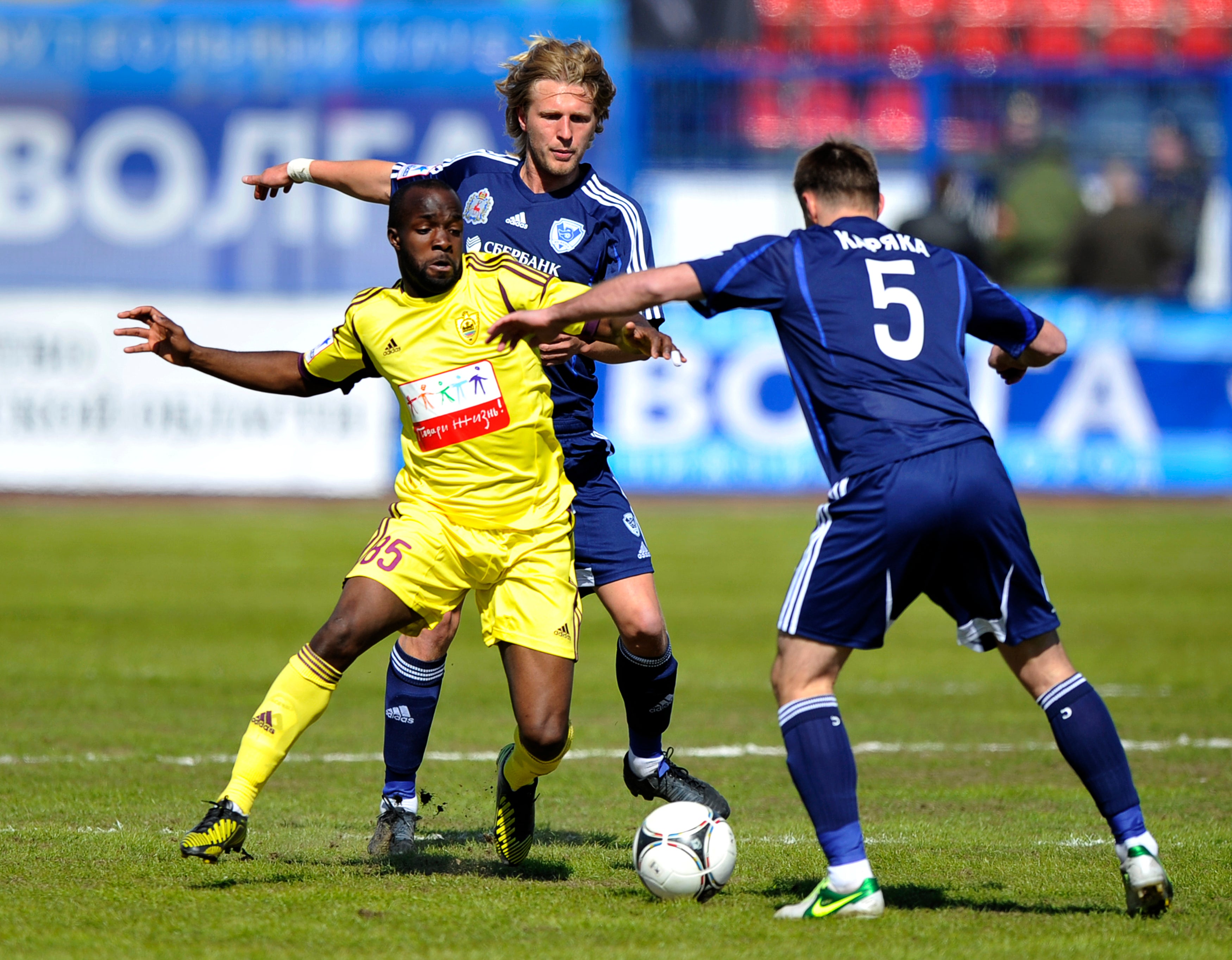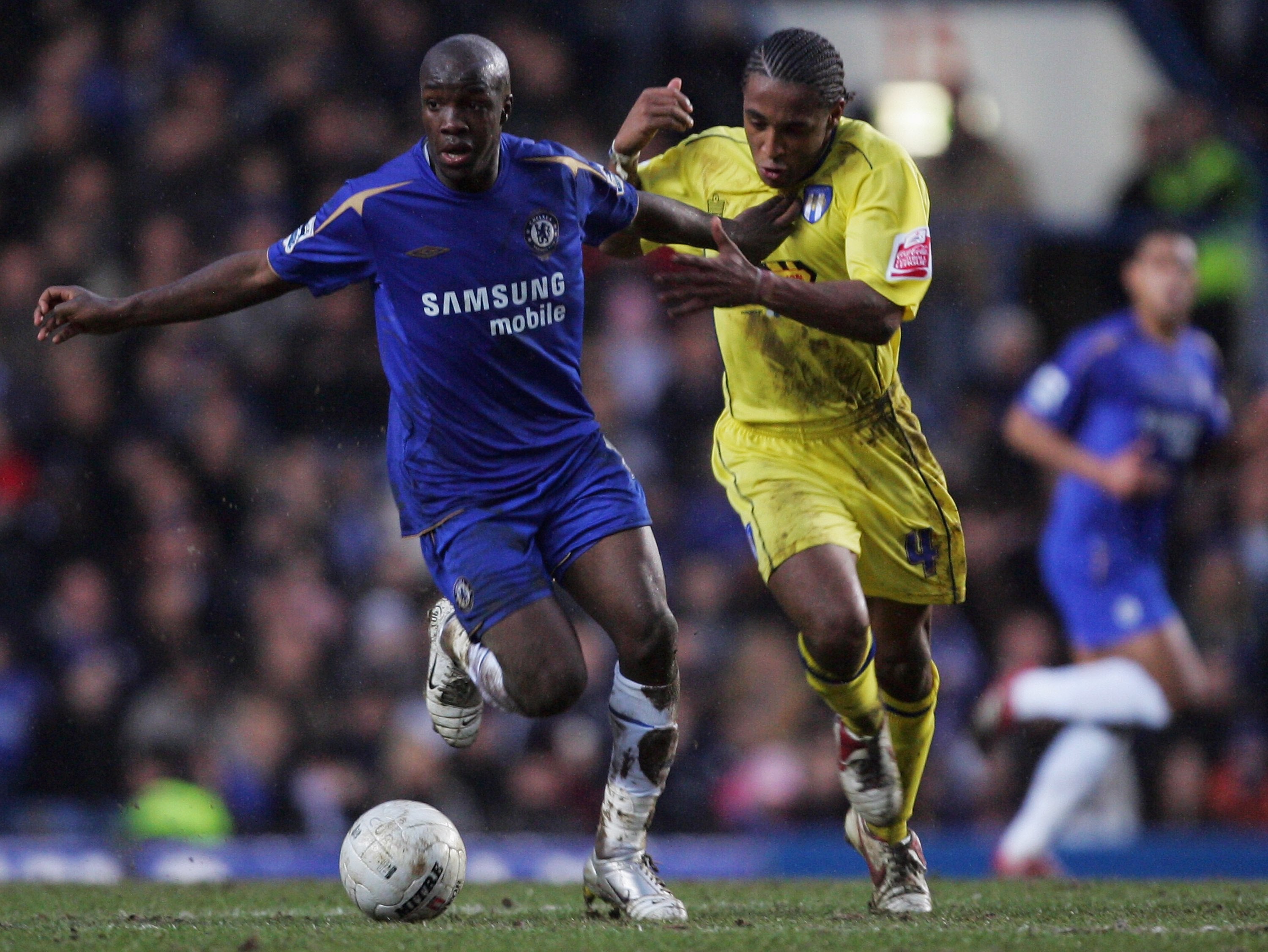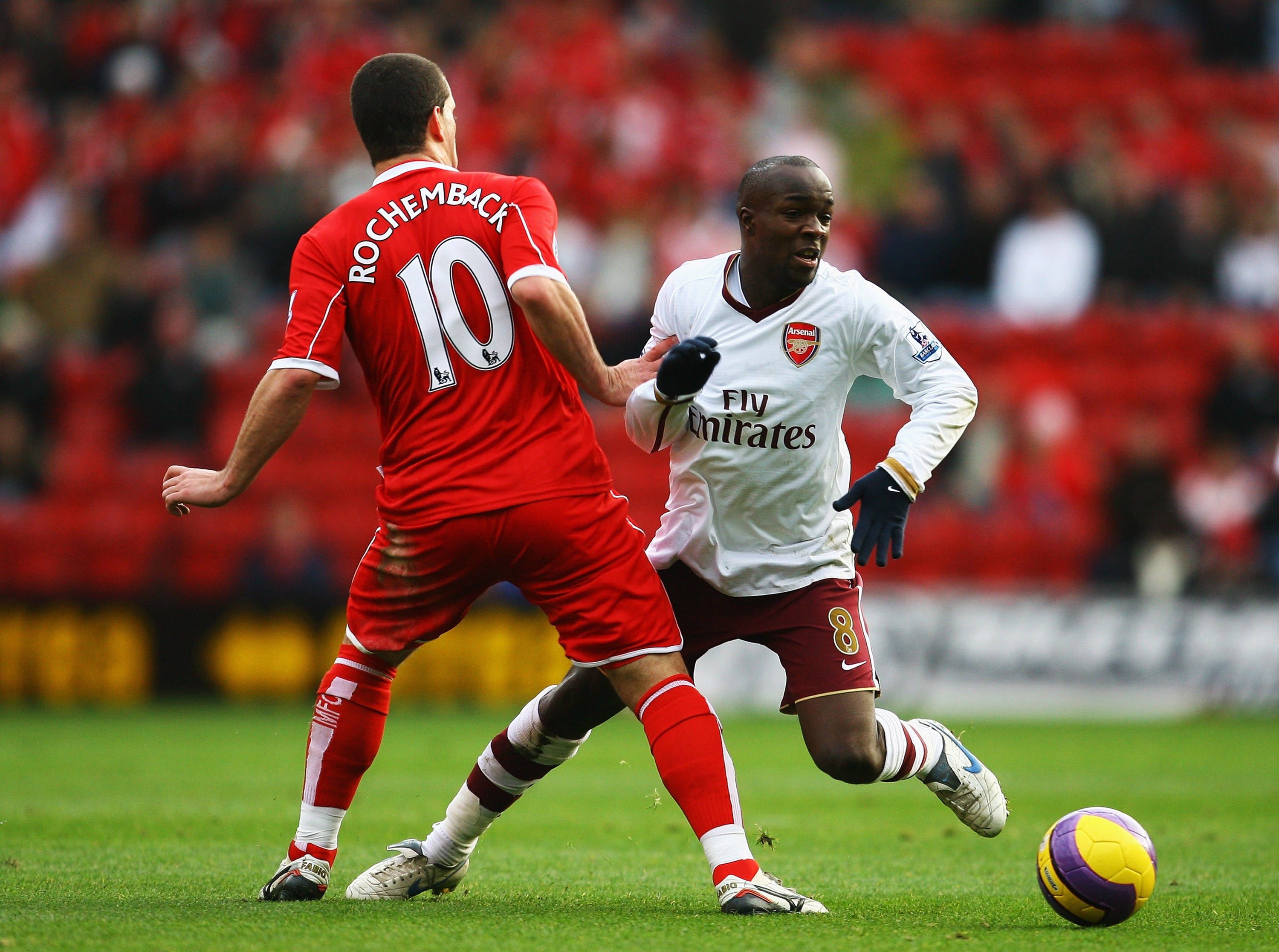Lassana Diarra case explained: The ‘new Bosman’ set to transform football’s transfer market forever
The former Chelsea, Arsenal and Real Madrid midfielder is challenging the legitimacy of Fifa’s entire transfer system

Your support helps us to tell the story
From reproductive rights to climate change to Big Tech, The Independent is on the ground when the story is developing. Whether it's investigating the financials of Elon Musk's pro-Trump PAC or producing our latest documentary, 'The A Word', which shines a light on the American women fighting for reproductive rights, we know how important it is to parse out the facts from the messaging.
At such a critical moment in US history, we need reporters on the ground. Your donation allows us to keep sending journalists to speak to both sides of the story.
The Independent is trusted by Americans across the entire political spectrum. And unlike many other quality news outlets, we choose not to lock Americans out of our reporting and analysis with paywalls. We believe quality journalism should be available to everyone, paid for by those who can afford it.
Your support makes all the difference.If the transfer system were to end tomorrow, what would actually replace it? Would there be collective bargaining between clubs and players, like in American sport?
As outlandish as that prospect seems, there are some in football currently asking for it – right down to whether Friday morning will bring about this profound upheaval.
That is when the European Court of Justice will rule on the Lassana Diarra case, which has been cast as challenging the legitimacy of the entire transfer system, as well as Fifa’s authority over it, having pushed for major changes last year. It could well transform the game, as well as the player’s legacy, and shift the direction of football for years to come.
There would be quite a quirk to that, too, given that Diarra is now mostly remembered for unfulfilled potential. He was for a long time just the answer to old quiz questions, as one of few players to have turned out for two of the Premier League’s old “big four” in Arsenal and Chelsea, before moving to Real Madrid. The move to the Bernabeu went awry because Diarra refused to bend to Jose Mourinho’s demands, which is why those who know him aren’t that surprised he has pursued this case.
His name may instead carry a very different legacy, similar to that of Belgian trailblazer Jean-Marc Bosman’s. The sense of portent is all the greater since it is Bosman’s lawyer, Jean-Louis Dupont, who has taken the case. Even some of the details feel as obscure as Bosman’s attempt to move from RFC Liege to Dunkerque in 1990, which eventually resulted in legal victory against Uefa and that first great overhaul of the market in 1995.
Diarra had moved to Lokomotiv Moscow from then free-spending Anzhi Makhachkala in 2013, only for a good start to turn sour and the midfielder to lose his place in the team. Lokomotiv believed that warranted a drop in salary, which Diarra refused to accept. The club later claimed he missed training sessions on false pretences, which they used as an excuse to sack him in August 2014 and sue him for breach of contract, which still had three years to run.
Lokomotiv took the case to Fifa’s Dispute Resolution Chamber [DRC], which ruled in their favour while banning Diarra from signing for another club until he paid them what he was worth on their balance sheet, amounting to £8.8m. He then appealed to the Court of Arbitration for Sport (CAS), who also ruled in Lokomotiv’s favour. In that time, Diarra’s quality ensured he had a lot of interest, including from Royal Charleroi. The Belgian club were willing to do a deal, on the condition that they could sign the midfielder as a free agent and not have to pay the compensation wanted by Lokomotiv.
Diarra asked Fifa’s administration to confirm he was a free agent, but they said it was a legal matter that only the DRC could confirm. They did exactly that a few weeks later, but Diarra claimed the delay meant he lost out on transfer opportunities. Without the necessary International Transfer Certificate [ITC] required for Charleroi to register him with the Belgian FA in that time, the club pulled out.

This forms the core of the case. Diarra, Dupont, the French players’ union and Fifpro argue this delay and the underlying rules represented a breach of European Union labour law. They decided to sue Fifa and the Belgium association for restraint of trade and €6m in lost earnings.
The Belgian court did eventually award Diarra €60,000 – not €6m – while holding Fifa liable for the fact he was unable to obtain a new contract due to clubs’ fear of being held liable for Lokomotiv’s compensation. The Belgian federation was also held jointly liable for its failure to ensure the player could exercise his fundamental EU rights by taking up a position with one of the country’s clubs.
A factor in that ruling was how Fifa applied its own rule within EU law, though, which is why many in the game really aren’t considering this referral to the European Court of Justice as “a new Bosman”. There was even surprise that Fifa refused to give Charleroi guarantees more quickly, given that a previous high-profile case appeared to settle this issue. Juventus were not ordered to pay compensation when they signed Adrian Mutu after his Chelsea contract was terminated.
The only way that the Diarra case is viewed as potentially taking down the whole transfer system is if Fifa’s refusal to issue the ITC is ruled as unlawful, and the whole underlying regime as anti-competitive, which would force the global federation to scrap its Regulations on the Status and Transfer of Players.
That is seen as unlikely due to the fact the case was already interpreted within EU law, with CAS recognising that “one of the objectives of the Fifa regulations is to protect contractual stability, which is considered to be “of paramount importance in football, from the perspective of clubs, players and the public”. In other words, that Fifa’s transfer rules are legal.

It probably says a bit that the major football agencies are not especially worried about Friday. Some are barely considering it at all. A widespread – but not unanimous – view is that it will not even be close to a new Bosman. Some representatives believe that a Diarra victory could actually work against players, in a manner that would be the opposite of Bosman. There would be less contractual stability. One argument is even that players would ultimately lose out if they can break contracts and move around at will, because without transfer income salaries would drop at the vast majority of clubs. Big clubs would ultimately end up hoarding even more footballers.
On the other side of all that, however, there was the non-binding opinion of the European Court of Justice’s advocate general, Maciej Szpunar. The following has been submitted to the European Court of Justice.
“There can be little doubt as to the restrictive nature of Fifa’s regulation on the status and transfer of players. By their very nature, the contested provisions limit the possibility for players to switch clubs … [and] necessarily affect competition between clubs on the market for the acquisition of professional players.
“The consequences of a player terminating a contract without just cause are so draconian that it is highly unlikely that a player will go down this route. The contested provisions are designed in such a way as to have a deterrent effect and send a chill down each player’s spine.”

As significant as those words seem, the European Court of Justice did not take on the advocate general’s opinion in December’s Super League case. They may ignore it here, and there is a view within legal circles that Fifa will make a far stronger case for its transfer system at the actual hearing.
One prediction is that the rules will be viewed as restrictive but that they can be justified by “economic efficiencies” like contractual stability. In that case, Fifa just need to further clarify their own rules.

If it goes the other way, they’d have to rewrite those rules. That would represent a completely new football world.
Even if the case doesn’t become a “Bosman” like that, the story does point to a far wider issue. It is just another legal test of the sport’s regulations, in the manner that is becoming the defining theme of 2020s football. That’s why many are being forced to imagine totally alternative visions of the sport.



Join our commenting forum
Join thought-provoking conversations, follow other Independent readers and see their replies
0Comments